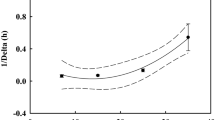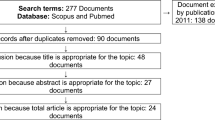Abstract
Owing to convenience, ease of preparation, and price, the consumption of commercial kimchi is gradually rising in South Korea. Here, we estimated the risk level posed by pathogenic Escherichia coli in commercial kimchi products using the quantitative microbial risk assessment (QMRA) approach to develop measures for preventing potential foodborne outbreaks from kimchi consumption. We collected 610 samples of commercial kimchi products produced in Korea, 267 kimchi samples from foreign countries imported to Korea, and 187 raw materials used in kimchi preparation, and analyzed them for contamination with pathogenic E. coli. A Predictive model was developed to observe the survival characteristics of pathogenic E. coli. A dose–response model was selected, and the risk level was estimated using @RISK software. Although a prior epidemiological study indicated the frequent occurrence of foodborne outbreaks arising from contaminated kimchi products consumed in food service facilities, we found a low probability of foodborne illness caused by pathogenic E. coli in commercial kimchi products.


Similar content being viewed by others
Abbreviations
- BCIG:
-
5-Bromo-4-chloro-3indolyl-β-D-glucuronide
- EAEC:
-
Enteroaggregative E. coli
- EHEC:
-
Enterohaemorrhagic E. coli
- EIEC:
-
Enteroinvasive E. coli
- EPEC:
-
Enteropathogenic E. coli
- ETEC:
-
Enterotoxigenic E. coli
- PR:
-
Prevalence data
- QMRA:
-
Quantitative microbial risk assessment
- RMSE:
-
Root mean square error
- TC-SMAC:
-
Tellurite cefixime-sorbitol MacConkey agar
References
Albert I, Mafart P. A modified Weibull model for bacterial inactivation. International Journal of Food Microbiology. 100: 197-211 (2005)
Baranyi J, Ross T, McMeekin T, Roberts T. Effects of parameterization on the performance of empirical models used in ‘predictive microbiology'. Food Microbiology. 13: 83-91 (1996)
Carrasco E, Perez-Rodriguez F, Valero A, Garcia-Gimeno R, Zurera G. Survey of temperature and consumption patterns of fresh-cut leafy green salads: risk factors for listeriosis. Journal of Food Protection. 70: 2407-2412 (2007)
Chambers IV E, Lee J, Chun S, Miller AE. Development of a lexicon for commercially available cabbage (baechu) kimchi. Journal of Sensory Studies. 27: 511-518 (2012)
Cheon SH, Lee SI, Hwnag IM, Seo HY. Quality characteristics of commercial kimchi paste. Korean Journal of Food and Cookery Science. Sci. 33: 9-19 (2017)
Cho G, Lee MH, Choi C. Survival of Escherichia coli O157: H7 and Listeria monocytogenes during kimchi fermentation supplemented with raw pork meat. Food Control. 22: 1253-1260 (2011)
Cho J, Joo I, Park K, Han M, Son N, Jeong S, Heo J, Kim Y, Oh M, Kim S. Characterization of pathogenic Escherichia coli strains linked to an outbreak associated with kimchi consumption in South Korea, 2012. Food Science and Technology. 23: 209-214 (2014)
Choi YK, Kang JH, Lee YW, Seo YG, Lee HY, Kim SJ, Lee JY, Ha JM, Oh HM, Kim YJ, Byun KH, Ha SD, Yoon YH. Quantitative microbial risk assessment for Clostridium perfringens foodborne illness following consumption of kimchi in South Korea. Food Science and Biotechnology. 29: 1131-1139 (2020)
Codex Alimentarius Commission (CAC). Principles and guidelines for the conduct of microbiological risk assessment CAC/GL 30-1999. Available from: http://www.fao.org/3/y1579e/y1579e05.htm. Accessed 2 July 2020
Davey K. Applicability of the Davey (linear Arrhenius) predictive model to the lag phase of microbial growth. Journal of Applied Microbiology. 70: 253-257 (1991)
DuPont HL, Formal SB, Hornick RB, Snyder MJ, Libonati JP, Sheahan DG, LaBrec EH, Kalas JP. Pathogenesis of Escherichia coli diarrhea. The New England Journal of Medicine. 285: 1-9 (1971)
Franz E, Tromp S, Rijgersberg H, Van Der Fels-Klerx H. Quantitative microbial risk assessment for Escherichia coli O157: H7, Salmonella, and Listeria monocytogenes in leafy green vegetables consumed at salad bars. Journal of Food Protection. 73: 274-285 (2010)
Geeraerd A, Valdramidis V, Van Impe J. GInaFiT, a freeware tool to assess non-log-linear microbial survivor curves. International Journal of Food Microbiology. 102: 95-105 (2005)
Graciaa DS, Cope JR, Roberts VA, Cikesh BL, Kahler AM, Vigar M, Hilborn ED, Wade TJ, Backer LC, Montgomery SP. Outbreaks associated with untreated recreational water-United States, 2000-2014. American Journal of Transplantation. 18: 2083-2087 (2018)
Huertas E, Salgot M, Hollender J, Weber S, Dott W, Khan S, Schafer A, Messalem R, Bis B, Aharoni A. Key objectives for water reuse concepts. Desalination. 218: 120-131 (2008)
Iu J, Mittal GS, Griffiths MW. Reduction in levels of Escherichia coli O157:H7 in apple cider by pulsed electric fields. Journal of Food Protection. 64: 964-969 (2001)
Kim JG, Yoon JS. Changes of index microorganisms and lactic acid bacteria of Korean fermented vegetables (kimchi) during the ripening and fermentation-part 2. Journal of Environmental Health Sciences. 34: 70-75 (2008)
Kim J, Bang J, Beuchat LR, Kim H, Ryu J. Controlled fermentation of kimchi using naturally occurring antimicrobial agents. Food Microbiology. 32: 20-31 (2012)
Kim MJ, Kim SH, Kim TS, Kee H, Seo J, Kim E, Park J, Chung JK, Lee J. Identification of Shiga toxin-producing E. coli isolated from diarrhea patients and cattle in Gwangju area, Korea. Journal of Bacteriology and Virology. 39: 29-39 (2009)
KCDC. Korea Centers for Disease Control and Prevention. Epidemiological Investigation of Infectious Diseases in Korea Annual Report 2017. Available from: http://www.kdca.go.kr/npt/biz/npp/portal/nppPblctDtaView.do?pblctDtaSeAt=5&pblctDtaSn=1010. Accessed Octorber. 1, 2021a)
KCDC. Korea Centers for Disease Control and Prevention. Infectious Disease Portal (2011–2017). South Korean Ministry of Welfare and Health. Available from: http://www.kdca.go.kr/npt/biz/npp/portal/nppPblctDtaMain.do (Accessed Octorber. 1, 2021b)
KCDC. Korea Centers for Disease Control and Prevention. Korea Health Statistic 2016: Korea national health and nutrition examination survey. South Korean Ministry of Welfare and Health. Available from: https://knhanes.kdca.go.kr/knhanes/sub03/sub03_02_05.do (Accessed Octorber. 2, 2021c)
Lee D, Gwack J, Youn S. Enteropathogenic Escherichia coli outbreak and its incubation period: is it short or long?. Osong Public Health and Research Perspectives. 3: 43-47 (2012)
Lee H, Kim K, Choi K, Yoon Y. Quantitative microbial risk assessment for Staphylococcus aureus in natural and processed cheese in Korea. Journal of Dairy Science. 98: 5931-5945 (2015)
Lee H, Yoon Y. Etiological agents implicated in foodborne illness world wide. Food Science of Animal Resources. 41: 1-7 (2021)
Lee HS, Choi HE, Choi UK, Yuk HG. Evaluation of standard enrichment broths for recovery of healthy and chlorine-injured Escherichia coli O157:H7 cells in kimchi. Food Science and Biotechnology. 29: 1439-1445 (2020)
Lee J, Ha J, Lee H, Lee JY, Hwang Y, Lee HM, Kim SH, Kim S. Analysis of microbiological contamination in kimchi and its ingredients. Journal of Food Hygiene and Safety. 33: 94-101 (2018)
Loge FG, Thompson DE, Call D. PCR detection of specific pathogens in water: a risk-based analysis. Environmental Science & Technology. 36: 2754-2759 (2002)
Nam GW, Kim SJ, Yoon KS. Quantitative microbial risk assessment of Clostridium perfringens in beef jerky. Korean Journal of Food Science and Technology. 50: 621-628 (2018)
Nataro JP, Kaper JB. Diarrheagenic Escherichia coli. Clinical Microbiology Reviews. 11: 142-201 (1998)
Nauta M, Hill A, Rosenquist H, Brynestad S, Fetsch A, van der Logt P, Fazil A, Christensen B, Katsma E, Borck B, Havelaar A. A comparison of risk assessments on Campylobacter in broiler meat. International Journal of Food Microbiology. 129: 107-123 (2009)
Niksic M, Niebuhr SE, Dickson JS, Mendonca AF, Koziczkowski JJ, Ellingson JL. Survival of Listeria monocytogenes and Escherichia coli O157: H7 during sauerkraut fermentation. Journal of Food Protection. 68: 1367-1374 (2005)
Pang H, Lambertini E, Buchanan RL, Schaffner DW, Pradhan AK. Quantitative microbial risk assessment for Escherichia coli O157: H7 in fresh-cut lettuce. Journal of Food Protection. 80: 302-311 (2017)
Park K, Cho E, Rhee S, Jung K, Yi S, Jhun BH. Kimchi and an active component, β-sitosterol, reduce oncogenic H-Rasv12-induced DNA synthesis. Journal of Medicinal Food. 6: 151-156 (2003)
PHAC. Public Health Agency of Canada. Pathogen Safety Data Sheets. Available from: https://www.canada.ca/en/public-health/services/laboratory-biosafety-biosecurity/pathogen-safety-data-sheets-risk-assessment/escherichia-coli-enterotoxigenic.html (Accessed September. 30, 2021)
Sanaa M, Coroller L, Cerf O. Risk assessment of listeriosis linked to the consumption of two soft cheeses made from raw milk: Camembert of Normandy and Brie of Meaux. Risk Analysis. 24: 389-399 (2004)
Shin J, Yoon K, Jeon D, Oh S, Oh K, Chung GT, Kim SW, Cho S. Consecutive outbreaks of enterotoxigenic Escherichia coli O6 in schools in South Korea caused by contamination of fermented vegetable kimchi. Foodborne Pathogens and Disease. 13: 535-543 (2016)
Song W, Chung H, Kang D, Ha J. Microbial quality of reduced-sodium napa kimchi and its processing. Food Science and Nutrition. 7: 628-635 (2019)
Strachan NJ, Doyle MP, Kasuga F, Rotariu O, Ogden I D. Dose response modelling of Escherichia coli O157 incorporating data from foodborne and environmental outbreaks. International Journal of Food Microbiology. 103: 35-47 (2005)
Teunis P, Takumi K, Shinagawa K. Dose response for infection by Escherichia coli O157: H7 from outbreak data. Risk Analysis. 24: 401-407 (2004)
Wikim. World Institute of Kimchi. Humanistic Understanding of Kimchi and Kimjang Culture. Available from: https://www.wikim.re.kr/upload/board/0012/14588990163930.pdf (Accessed September. 29, 2020)
Yun B, Team MS, Nas R, Kim M, Ryu J, Park B. Investigation of microbiological and physiochemical quality for irrigation water used in napa cabbage cultivation. Journal of Food Hygiene and Safety. 32: 396-403 (2017)
Acknowledgements
The authors would like to thank all of the reviewers of this study and their great contributions
Funding
This research was supported by the Korea Ministry of Food and Drug Safety (Grant number: 17161MFDS031).
Author information
Authors and Affiliations
Corresponding author
Ethics declarations
Conflict of interest
The authors declare no conflict of interest.
Additional information
Publisher's Note
Springer Nature remains neutral with regard to jurisdictional claims in published maps and institutional affiliations.
Rights and permissions
About this article
Cite this article
Nam, G.W., Jeong, M., Heo, E.J. et al. Quantitative microbial risk assessment of pathogenic Escherichia coli in commercial kimchi in South Korea. Food Sci Biotechnol 30, 1455–1464 (2021). https://doi.org/10.1007/s10068-021-00997-7
Received:
Revised:
Accepted:
Published:
Issue Date:
DOI: https://doi.org/10.1007/s10068-021-00997-7




